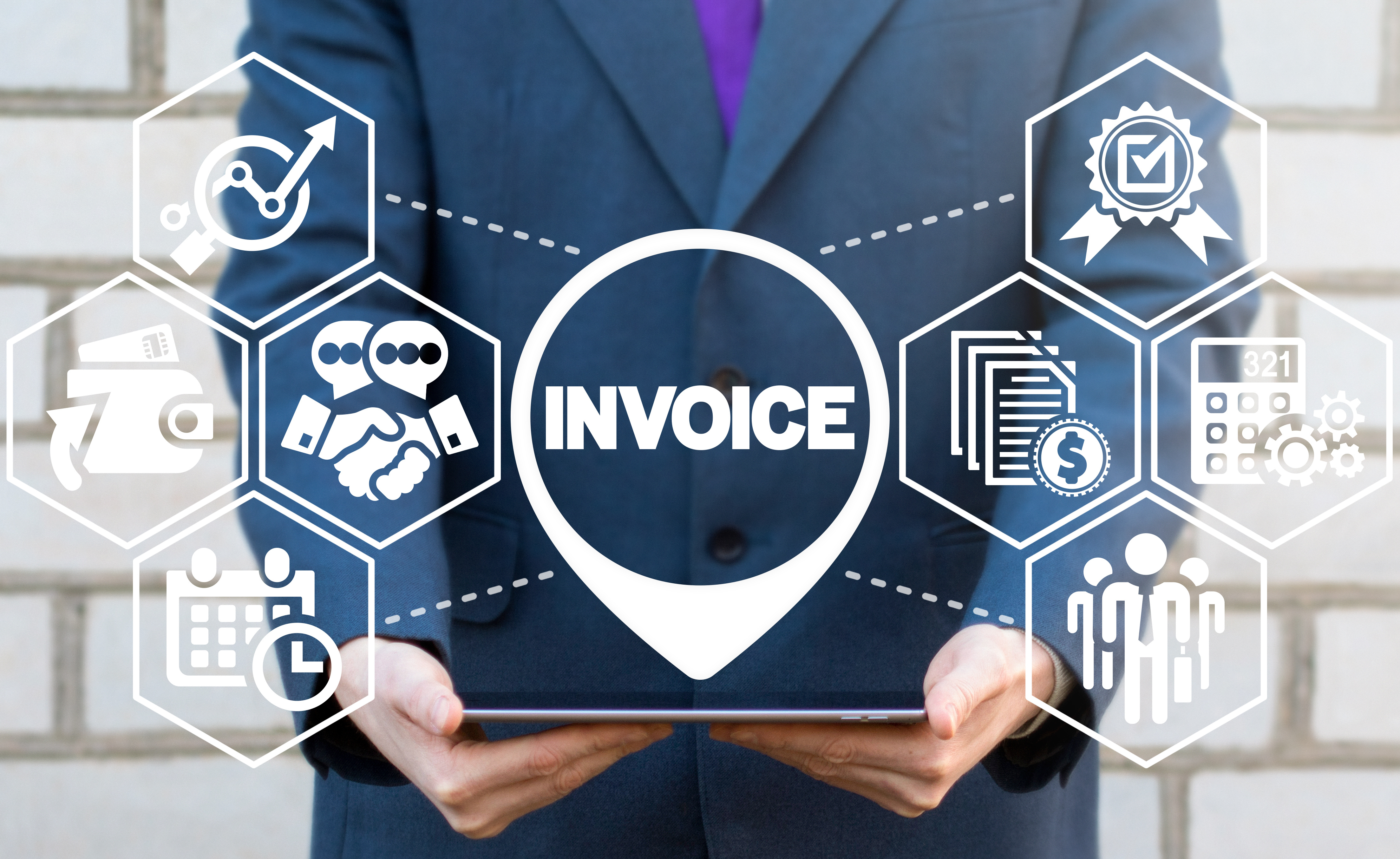What is accounts receivable automation (automated invoice processing)?
Effectively managing accounts receivables is crucial for the financial health of any business. Accounts receivable represents the invoices that businesses rely on to get paid for their products and services. However, if invoices are sent with errors, delayed, or lack clear payment instructions, payments can be delayed, which disrupts cash flow and impacts overall business operations.
Accounts receivable automation (also known as automated invoice processing) streamlines the invoicing and payment collection process by converting it into an automated workflow using specialized software. This reduces human error, speeds up the process, and ensures timely payments, ultimately improving cash flow.
In addition to these benefits, automating accounts receivable can provide businesses with better insights into their financial health. It allows companies to track unpaid invoices, send reminders, and follow up on overdue payments more efficiently. With real-time updates and reporting, businesses can make more informed decisions and reduce the risk of late payments or bad debt.
How does invoice processing automation save time and money?
If an accounting department handles all (or any) processes manually, you’ll see how time-consuming the process of invoicing can be. But it’s not just time-consuming. It can also be error-prone. Mistakes about the recipient and invoice details including totals, discounts, taxes, and even payment terms can happen.
Invoice processing automation solutions streamline the process, leaving the tedious task of checking for accuracy to a system that’s designed to do just that. Automation can decrease a company’s complete invoice processing time from an average of over 30 days to less than 5 days. That’s significant! Eliminating the need for manual data entry with an automated system also saves time and improves accuracy.
If an invoice is sent using an automated AR invoicing solution, the recipient can choose to sync it to their own automated system or print a copy for their own records and accounts payable process.
A business can set up systems to include their customers in the process of invoice approval, allowing them to quickly respond to any potential issue. Having this set up as part of the workflow will decrease the processing time needed to adjust an invoice. With artificial intelligence, the AR processing software can also eliminate that error for any invoices going forward.
Automated invoice processing can help businesses:
- process and distribute invoices faster
- improve the customer’s payment process (resulting in quicker payments and lower daily sales outstanding)
- increase the accuracy of every invoice
- improve the security of the AR/AP process
- prevent human error and fraud through an automated system
Automating workflows benefits invoice approval processes (and the AP process)
Invoice processing automation makes things easier for both you and your customers. Designing an effective and efficient invoice processing workflow is one of the benefits of automation. This can remove tedious tasks and frees up time for team members to focus on business growth.
Each time a customer receives an invoice through an automated system, they’ll see consistent branding, descriptions, pricing, and payment terms. This creates a more professional tone and benefits customer relationships. When invoices always look consistent and on-brand, the invoice approval process is improved.
Automation software should streamline accounts receivable invoice management
Different companies offer automated invoice processing. Some solutions are customized to specific industries and others are more generic. The right solution for any business will streamline the entire invoice management, accounts receivable, and accounts payable process without creating additional work once onboarding is complete.
The right system should also create a positive experience for customers. Customers should be able to easily receive, review, approve, and pay invoices, and they’ll know exactly how to contact a vendor if there are any questions.
When looking for an AR automation service provider, take time to read customer reviews from other businesses on an independent platform like Trustpilot, Capterra, or G2. Check the BBB for any complaints or violations. These first-hand reviews of using the solution can be valuable in your decision-making process.
Implementing an AR solution will require learning and adjustment by the accounting team, just the same as if another part of the company was to undergo automation. The right software should also integrate with your current ERP system and should be a fairly easy process to do so. Different countries have different accounting and software requirements, so the software must be compatible with regulations. For instance, a company that only sells to US clients may have different needs than a business that sells internationally.
One company providing a unique and highly effective solution to automation for B2B companies is Resolve. Using fintech advancements and technology innovation, Resolve allows businesses to streamline their accounts receivable processes while easily offering net terms to their customers.
Companies can work with Resolve if they are interested in automating the credit checking process and credit terms enrollment for their customers. Don’t worry: the credit check can be a discrete process—nothing is required from the customer and the check does not impact their personal credit rating. The results of the credit check allows Resolve to reliably determine what credit limit to extend to each customer and what net terms to offer.
Going beyond an automated accounts receivable invoice process system, Resolve also has features to supplement the company’s working capital, a huge benefit for small business cash flow. Once an invoice is issued to the customer using Resolve’s automation software, Resolve can even pay up to 90% of the outstanding invoice within days. This gives the customer a sufficient amount of time to make their payment in full, based on their net terms agreement, while also unlocking the company’s working capital.
For additional versatility, Resolve also allows for multiple methods of payment from the customer, which is vital for b2b transactions. The business process that Resolve facilitates also gives the customer immediate access to their online account where they can view their remaining credit and check when invoices are due. Integrations to existing systems, especially the accounting system, is crucial.
Automation and accounts payable
On the flip side, most companies have multiple accounts payable invoices to pay each month. Switching to AP automation is valuable for maximizing efficiency and accuracy. Accounts payable automation makes it quick for a system to three-way match each accounts payable invoice by comparing the invoice data in a vendor’s invoice against the procurement and purchase orders (PO) and the goods or services received (bill of lading).
One crucial element in the automation process is optical character recognition (OCR). Using OCR, typed items or handwritten text can easily be converted into machine-encoded text. Smart data extraction ‘reads’ the electronic text and with the power of OCR, a business that has an automated accounting system can automatically review an accounts payable invoice by using its invoice capture feature to easily convert paper invoices into electronic invoices.
Most automated systems use cloud storage to digitally store files in a secure and accessible way. Data storage may differ by country so automation software that meets the needs of each business’ country of origin and the countries of their customers is important for compliance.
Innovative advancements are changing the accounts payable process. Accounting departments must check for accuracy before issuing payment but through automation developments like machine learning (ML) and artificial intelligence (AI), this is changing. AI and MI can determine what to do with information, how and where to store it, check for accuracy, and learn efficiencies from the data. The more data that is captured through invoices that are processed, the more efficient the system becomes. This takes away the time-consuming process that existed before.
Without accounting software automation, bottlenecks happen all the time in approval workflow. Thanks to automated invoice processing, it becomes very difficult for human-error, and even fraudulent invoices, to make it through the system.
Best practices for implementing invoice processing software
One of the advantages of accounts receivable automation is the ability to set automatic customization of each customer’s invoices. Automating accounts receivable also improves cash flow forecasting. The data about due payments is accurate and reliable. The software also improves the collection process. Late payments can be immediately addressed through workflow automation with an automatic email to the client or a scheduled reminder for the appropriate team member to call the client. Solutions like Resolve have features that support invoice customization, automatic reminders, and even accounts receivable financing.
Invoice automation software should also provide easily accessible information on a variety of points, including day sales outstanding (DSO) and how the company is completing collections (collection effectiveness index, or CEI). This information allows for better financial planning, improved negotiations with suppliers, and improved applications for financing.
The accounting department should be involved in the process of automation and design of the workflows. Integrations are also important, as any new software should be easily integrated into your current accounting system.
Lots of companies encourage customers to pay on-time through incentivized early payment discounts. For instance, reverse factoring occurs when a company extends or maintains its longer payment terms by offering early payments on approved supplier’s invoices. Automation can help with all this too.
Finally, disputes may occur between you and your customer from time to time. This can substantially slow down the invoice payment process, so ensure that your workflow includes solutions for dispute resolution for discrepancies and misunderstandings.
As you can see, automating the accounts receivable process can lead to many improvements across all your processes. Working with the right solution will save time and money while enhancing customer relationships and providing a more accurate way of reporting and forecasting.
If you’re looking for a way to start implementing accounts receivable invoice processing automation for your B2B business, learn more about Resolve.







